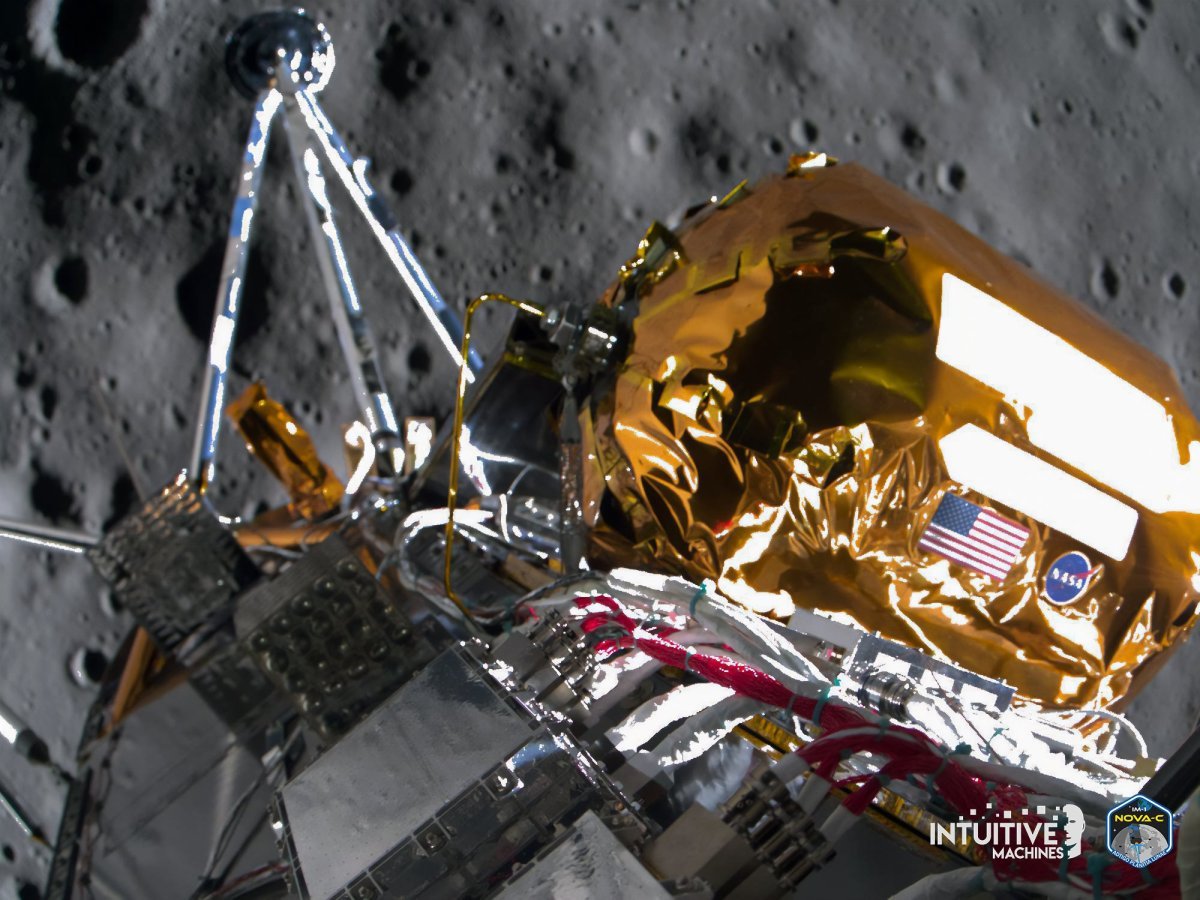Intuitive Machines’ inaugural voyage to the moon is set to reach an untimely conclusion due to a slightly unorthodox landing. According to the company’s recent update, the spacecraft has tilted onto its side, resulting in the solar panels being misaligned with the sun.
Flight controllers are currently assessing the battery’s remaining life, estimating it to be T-plus 10-20 hours as of Tuesday morning. This differs greatly from the original expectation of T-plus 7-10 days, as the spacecraft touched down on the moon only five days ago.
Intuitive Machines gained global recognition when their spacecraft, named Odysseus, successfully landed near the lunar south pole last week. Apart from being the first American hardware to make contact with the lunar surface since NASA’s final crewed Apollo mission in 1972, it’s also the first privately developed and operated spacecraft to succeed in this venture. Not only that, but it’s also the closest a lander has ever been to the lunar south pole.
However, this historic victory was dampened by company representatives who revealed in a televised press meeting that the spacecraft had actually tipped over during landing. CEO Steve Altemus hinted that Odysseus descended at a slanting angle instead of straight down. He also speculated that the lander may have descended more rapidly than intended, causing one of its feet to potentially get stuck on a rock or crevice, ultimately leading to the tipping.
Based on the solar arrays’ power generation, it appears that Odysseus has most likely come to a halt perched on a rock. It was located on the surface via images taken by NASA’s Lunar Reconnaissance Orbiter, a satellite that has been orbiting the moon for over a decade, scouting for information about its surface. The images confirmed that the lander landed within a 1.5-kilometer radius of its intended site near the lunar south pole.
Despite this setback, Odysseus is still transmitting data and photos related to the onboard payloads. The company has not specified whether the data rate has been impacted by the lander’s posture. Though it is worth noting that two of the spacecraft’s antennae are now facing towards the ground, while none of the science payloads are directed towards the lunar surface.
Intuitive Machines CEO Steve Altemus stated that the loss of the antennae is a significant hindrance, affecting the data-collection process. He emphasized that our ability to communicate and receive accurate and essential information from the lander is severely compromised due to its current condition.
The success of Intuitive Machines’ historic moon landing is largely attributed to the quick thinking of flight controllers who had to improvise a navigation solution upon discovering that the laser range finders on board the spacecraft were not functioning. Remarkably, they utilized one of the lander’s payloads, a doppler lidar technology demonstrator from NASA, to guide the vehicle towards a safe landing spot on the surface.
The company later revealed that the laser range finders had stopped working due to human error and decisions made in order to save time and money, rather than any technical malfunction. According to Mike Hansen, the head of navigation systems at Intuitive Machines, engineers opted not to test-fire the laser system prior to launch due to budget and scheduling constraints. They also inadvertently neglected to toggle a physical safety switch on the system before liftoff.
Intuitive Machines and NASA will hold a second televised press conference tomorrow to discuss updates regarding the continuing moon mission.








